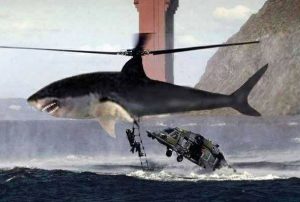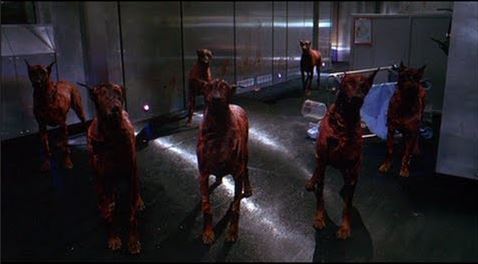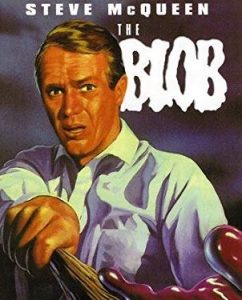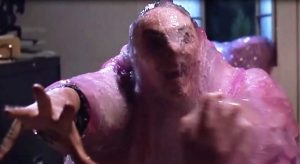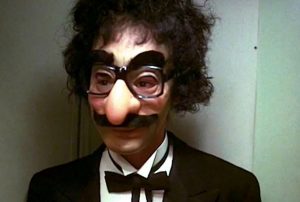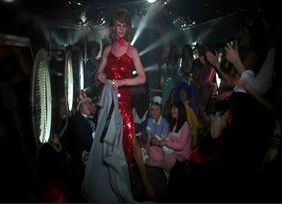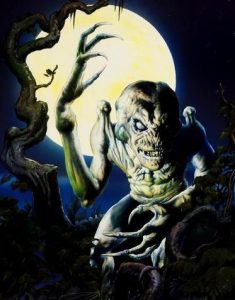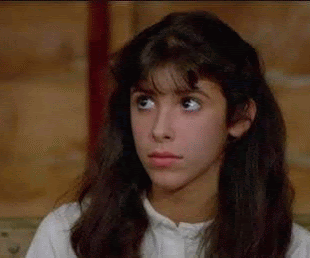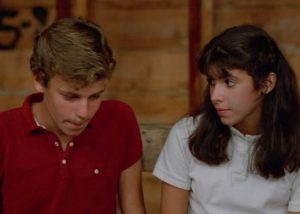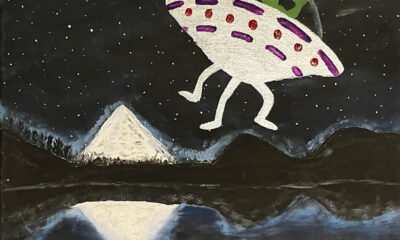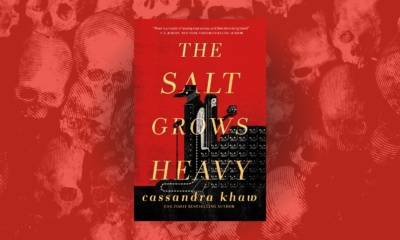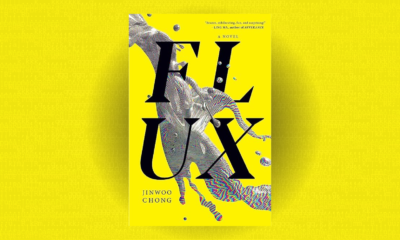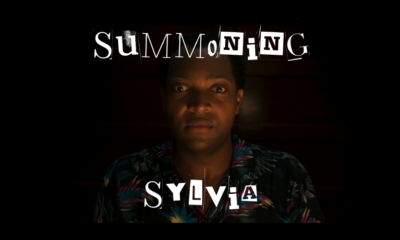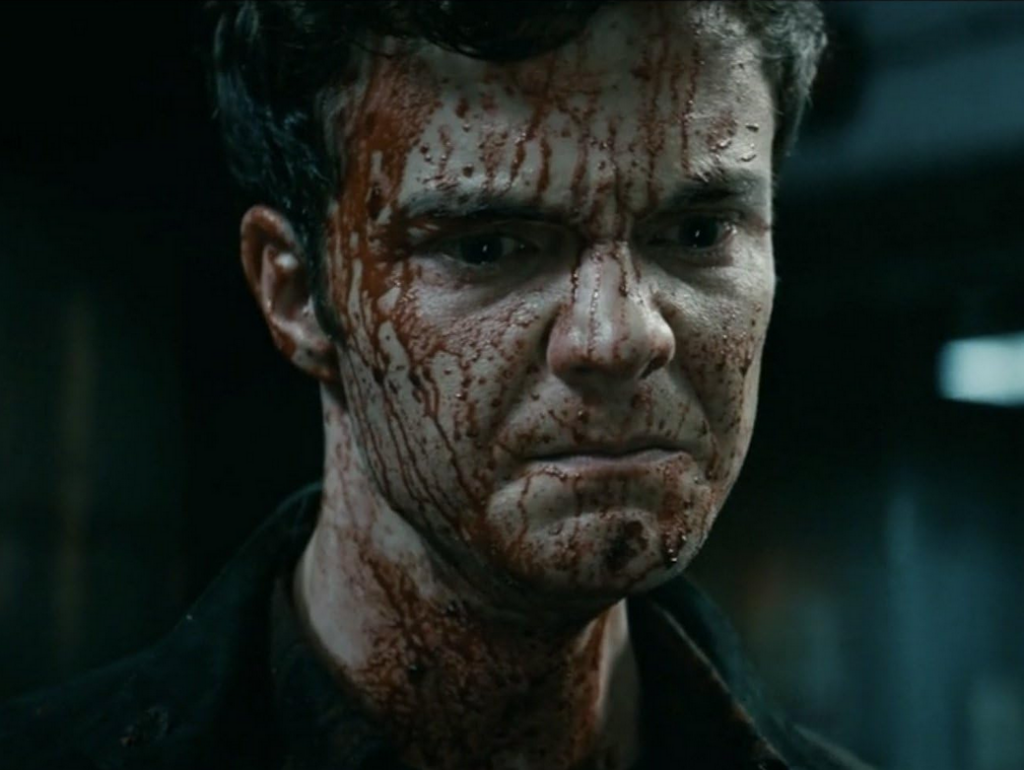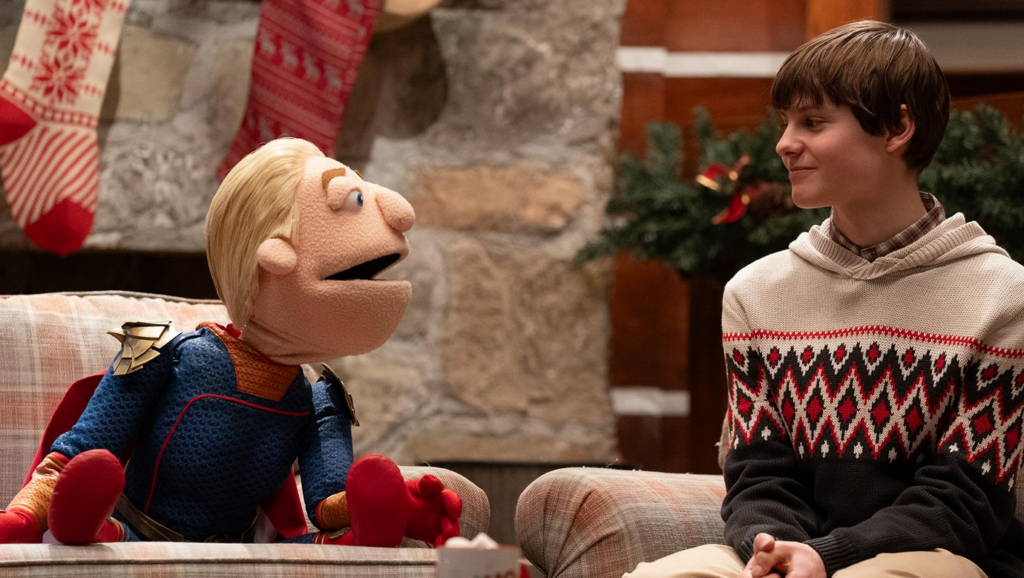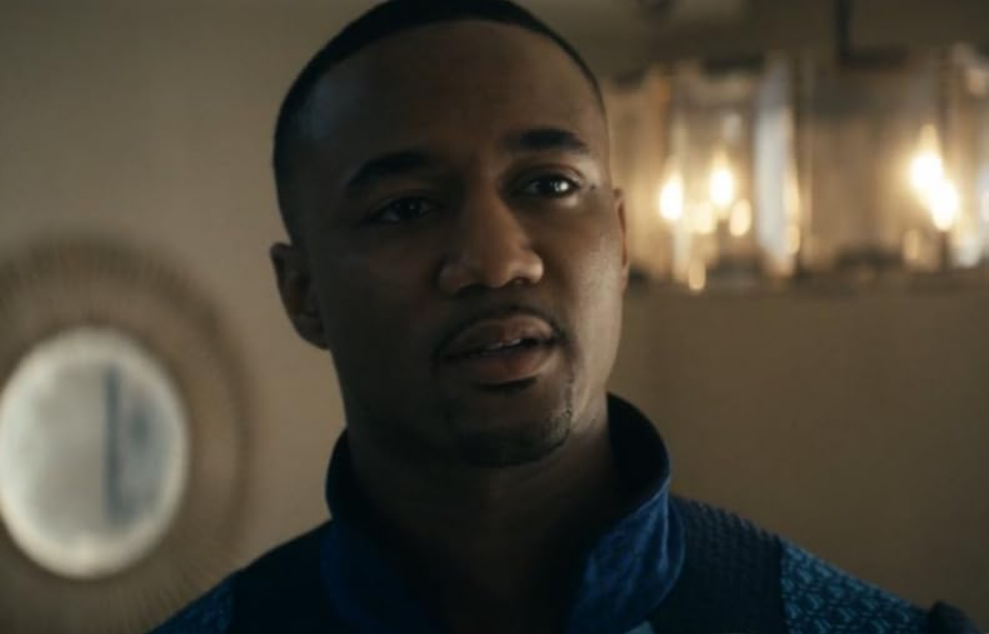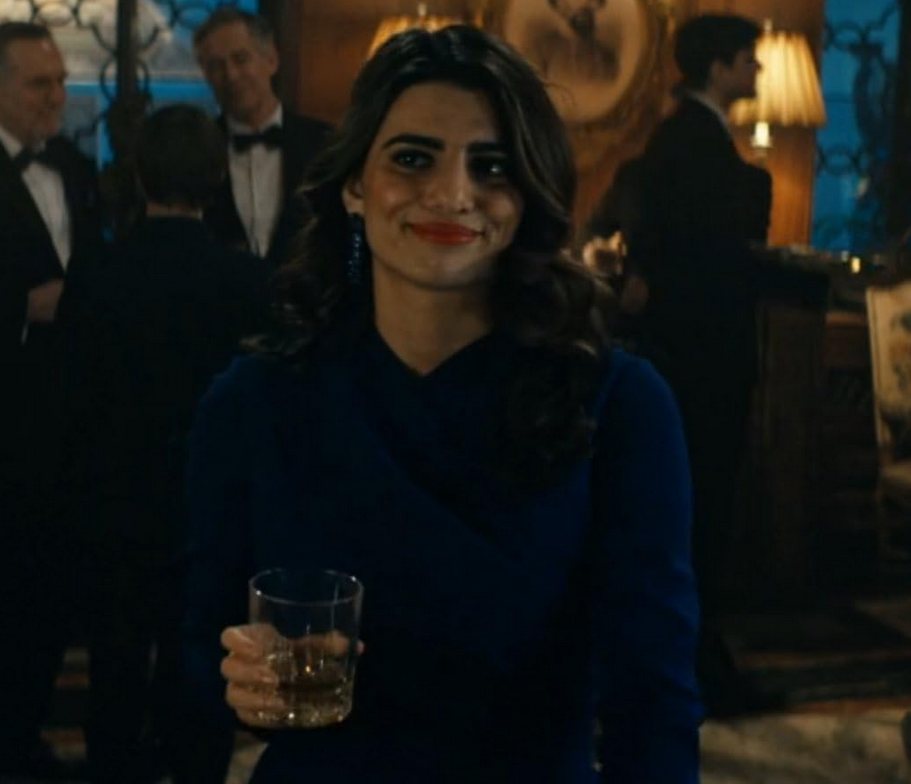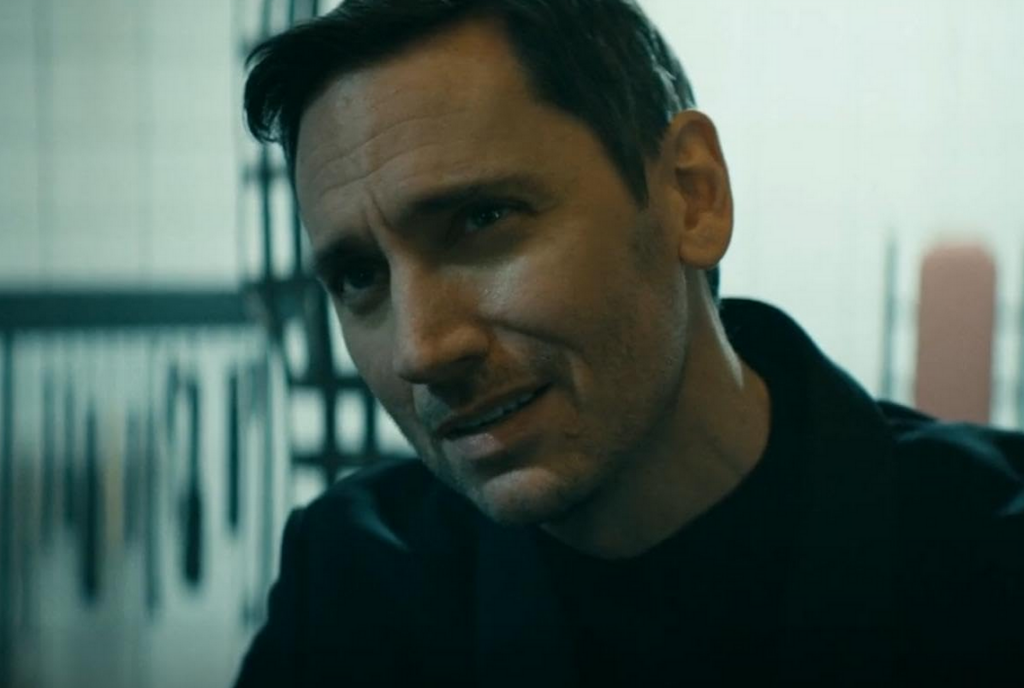
Happy Women’s Day: A List to My Monster of Choice
More Videos
Published
4 years agoon
By
J.M. Brannyk
So, I have this inappropriate habit of answering honestly when asked a question. I’ve failed personality tests this way – multiple times. And it’s not because I’m a terrible person (it’s because I’m an awful person ahahahaha – classic gags never retire), it’s just that I give these questions thought and merit. Maybe too much thought and merit.
During one uncomfortable icebreaker at a work function, my questions were: my name (easy, it was given to me a while ago), my job (easy, it was earned), and my favorite animal. I should have said dog. Dogs are great.
I did not say dog. I said Protoceratops. But that requires an explanation, which then goes into the book by Adrienne Mayor that posits that it was the fossilized Protoceratops bones and nest/egg fragments, found by ancient Scythian nomads, that were the inspiration to the myth of the griffin. You see, the Protoceratops had a beak-like mouth, much like an eagle. The ridge was very delicate, so if it were to break apart from the head and fall near the back…
And there were about thirty people that realized too late that they had asked a mundane question that I was going to answer: honestly, painfully, specifically, and disgustingly.
So, what am I leading to?
Because Haunted MTL asked me a question…
Oh, dang. Here we go.
As part of the contributor’s profile, Parzz (and boss) asked a “simple” question: What is your monster of choice?
So, first of all – what is a monster?
Okay, no, we’re not going that far into it. I could, but I would never see life again and I would miss parts of it.
No, instead, we’re going to do something a little different. And it all has to do with identity.
Since November, I’ve been a contributor to Haunted MTL, kicking around the tufts of cult classics, newer shrugs, and beautiful hidden gems. But this month, Imma get real, kids, because this is a weird month for me. You see as I am a gender-fluid –nonono, it’s cool, come back. I barely identify as Apache helicopter or whatever Millennials, Boomers, and Zoomers are making fun of these days.
But with who I am, “monster of choice” is not an easy “tea or coffee” pick for me. Since I’m the type to write an overly-complicated essays about surfing Nazis and HIV zombies, you can see I take my horror seriously.
So, let’s explore the monsters who are the “others” of gender for this Women’s Day as I narrow down to my monster/villain of choice. Join me, won’t you?
Brain Roll Juice
Gender and horror itself are interesting elements fused together more closely than most would think. There are masculine horror icons and traits – serial, insane, sadistic, carnal. Just as there are feminine – sorrowful, vengeful, jealous, and…well, a more complex insane, shall we say?
Masculine; we have the bloodthirsty hookman, lumbering Jason, sadistic Freddy, carnal Candyman, serial Jason. Their motives are not complex. They are killers, and they kill. On the other hand (more often seen in legends) feminine icons are more personal and complex. They are La Llorona, Bloody Mary, Kuchisake-onna, banshees, and the hag/witch (Baba Yaga, the Bell Witch, and the like).
In movies, the roles can be pretty stringent – usually if a female villain/monster is introduced, she is the mate of the male – the supporting role. This is most apparent in the older films like Bride of Frankenstein, but even can be seen in films like Basketcase 2-3. They’re usually cis-gender and adhere to gender norms in one form or another.
Even in legend, monsters are generally gendered via society’s gentle nudge. Bigfoot = hairy dude. Sea creature = scaly dude. Zombie = rotting dude. Vampire = fanged dude. Loch Ness Monster = dino lady. New Jersey Devil = a devil dude into some weirdass cakes.
You get my point.
However, there are characters that fall into a more grey area, regardless of sex (very loosely: gender is how you feel, sex being the dangle or non-dangle parts). These are a few of my favorites, 7 to be precise, all taken from movies. Take note – there are some spoilers to old movies.
The List
#7 – The Blob
“You can’t say ‘the blob’. it’s…like…just a blob. It’s not anything!” Glorious Spouse, 2020
Au contraire, mon petit fermier (my French may be rusty). But, yeah, I can count the blob. Why not? Just because of its absence of sex and gender doesn’t mean that I can’t identify and add it to the list, honey-pie.
In fact, the concept of the blob, as a growing, expanding, overwhelming alien creature, is a perfect metaphor for that cool gender-fluid anxiety that sometimes hangs around. Out of control, amorphous, and just seen by other people as “icky” and untouchable. It’s gross. People don’t want to explore it, they want to avoid it, and the more you avoid it, the larger it gets. The more suffocating it becomes because it’s a weird, gross problem that just gets in the way.
And like the end of the movie, it never really goes away. It can be quiet sometimes. It can lie dormant. But it’s never really gone, and it’s never really dead.
#6 The Cenobites
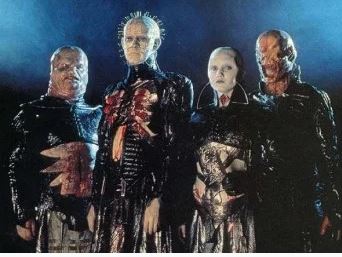
I might get push-back on this one (well, maybe all of them, who knows). The cenobites have clearly defined sexes, yes, but when gender is concerned, they are fluid because gender just doesn’t matter. Some call them angels, others call them demons, but no one says that they adhere to social norms, especially not typical, standard American.
Pinhead himself is small, lithe, and femininely sleek in his costume, the only imposing parts of him are his voice and presence. The female cenobite is not portrayed as a mate, but just another vessel of their main mission – the experience. Their whole fixation is on pain/pleasure in the experience of eternity, not hierarchy or power (I’m just focusing on the first movie).
#5 Kenny from “Terror Train”
I really dig this killer on a few different levels. I mean, haven’t we all wanted, at some point in our lives, wanted to kiss Jamie Lee Curtis and then turn into a human tornado?
And I know that Kenny might get flack as a character for a few different reasons – he has problems with mental illness, he has gender identity issues, he has murdering issues. However, he is a fascinating character as all identities.
Kenny is not just male but also female, “they” are a duality as much as Jamie Lee Curtis is the duality as “the last girl”. In fact, to call her a last girl leaves something to be desired because it’s not through circumstance that she survives, but her duality of masculine and feminine traits that keep her alive and unbroken.They are both unconventional, but Kenny fails to actualize where Jamie Lee accepts. Hence, human tornado.
Anywho, there are times that I wish I could fade into different personas as quickly as Kenny, and blend in with whatever crowd that happens to be there. Especially as Snake Man.
#4 Pumpkinhead
Pumpkinhead is an interesting creature, as it is an interesting movie. It also made me feel feelings (how dare it). I’ll probably get into my P-Head love later (phrasing), but as I mentioned, this creature is interesting. Its role is very fascinating. In my intro I mentioned a few iconic horror figures – male and female. Masculine motivations tend to be gluttonous, wanton bloodlust and power over others. Mostly, stabby-stabby, kill-kill. Even Freddy, although he likes to play with his victims, it’s all a power thing.
Female figures can be stabby-stabs, but more often than not have more complex motivations for murder and mayhem. They are seeking revenge, or haunted by their bloody past. Much like this, Pumpkinhead appears as a manifestation of vengeance. And, maybe this is a stretch, as it is not even spurred its own revenge, but just a supporting figure (a tool) of someone else’s revenge, it is taking a more feminine role. Just like I mentioned many females in horror (and “normal”) movies are there only for the fact of supporting the male’s actualization and his character development. Pumpkinhead is the same. Well, apart from being a mate…
P-head is different from most villains, even “summoned” characters such as Betelgeuse. It gains no pleasure or pain from doing its work, it has only one task and has no say or agency. It has absolutely no power, nor does it seek it. It’s kind of sad, actually. It’s basically a murderous Meeseeks, but with even less agency and dignity.
#3 Angela from “Sleepaway Camp”
This one has gotten some slack over the years and I can’t speak to all sides, nor should I, I can only speak to how I feel about this character and what Angela means to me. Let’s get over the reveal, okay? Go watch it if you haven’t.
So, Angela the Killer is relatable because “she” is forced into both worlds, while belonging to neither. I also want to point out that “she” has been called trans by some, but I’m not sure if that’s even inherently correct as this was not by choice. Angela is attempting to navigate as what she/he/it believes is required of her/him/it, enduring some of the most negative aspects of being “female” (sexual harassment, bullying, predatory behavior).
The murders are a result of the culmination of the abuses Angela faces and the confusion of never being accepted as she/he/it truly is. Every time Angela begins to open up, she/he/it is again met with societal expectations and norms that she/he/it can’t adhere to, and the ultimately crushing disappointment when others can’t accept that.
I’m not saying that killing everyone was the right move…I’m just saying that I think I get it.
#2 Jaws
Jaws…Jaws is many things, all in one. It is a force of nature, a shark with a badass scar, a mother seeking revenge, a…voodoo spirit seeking revenge…Jaws itself is a strange a beautiful enigma…and also really good-bad sequels featuring beautiful Lea Thompson and not-giving-a-flip Michael Caine.
But I want to concentrate on Jaws #1. The original. One of the reasons that I love the movie (a million times more than the book) is that it’s an examination of male identity – from father/authority figure, scientist/intellectual, to…well, Quint.
But Jaws, itself, is more of a force of nature, an impending doom, than an example of masculinity. It tests their strengths. It prods their weaknesses. It is more monster than man, with only primitive motivation of survival, and perhaps, the hunt.
You could make a claim that Jaws also encompasses a more aloof masculinity, but, again in my own opinion, it is a primordial being of hunger and chaos – sex and gender are too complex for what it represents. Almost like a primeval Leviathan, rising from the bowels of the ocean to cast down the modern man.
Too bad for it that Roy Scheider was a legend, with Richard Dreyfuss on the sidelines, ready with high-fives.
And the Monster of Choice is:
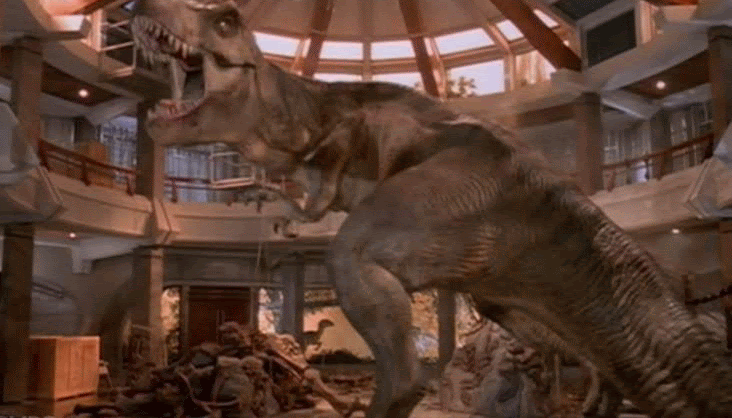
#1 T-Rex from “Jurassic Park”
Here we are. Surprised? Don’t be.
Apart from being one of my favorite films (and a friendship deal-breaker if you don’t like), it has the best female villains.
They just happen to be dinosaurs…
And are also not entirely female…
It’s true. At one point, Dr. Grant finds egg shells and realizes that the dinosaurs are changing their own sex to reproduce (“life will find a way”). While this is a bit of a throw-away line to go into the greater “playing God” theme, it’s a very cool and powerful moment for the creatures themselves. In nature there are animals that can change sexes, “gender roles” and other social dynamics. It’s pointing to the fact that it’s natural. We evolve. We change as a species. It’s okay. To be stagnant is to be the death of our lineage, we must adapt. In the movie, it was the sex of the dinosaurs. For humanity, maybe it will be something akin to gender.
But just as a movie concept, and going back to monsters, that makes the T-Rex incredibly powerful. Not only did she successfully fight for her freedom from forced confinement and exploitation, she can change herself. She can become he, and vice-versa. She has that agency and choice to, which is something lacking by others on the list. She can physically alter her body and hormones by her own will, for the continuation of her lineage and legacy.
By the end, she establishes her boundaries, reclaims her own body, and asserts her own path. And if that isn’t one of the most powerful characters in cinema history, boy, I sure don’t know who is.
When not ravaging through the wilds of Detroit with Jellybeans the Cat, J.M. Brannyk (a.k.a. Boxhuman) reviews mostly supernatural and slasher films from the 70's-90's and is dubiously HauntedMTL's Voice of Reason. Aside from writing, Brannyk dips into the podcasts, and is the composer of many of HauntedMTL's podcast themes.

You may like
-
Re-Re-Revisitations, 3rd Times a Charm: More Art by Jennifer Weigel
-
The Salt Grows Heavy: Apocalyptic Fairy Tale Gore
-
Family, Nostalgia, and Time Travel: Flux Review
-
2023’s ‘Summoning Sylvia’ is a Faboolous New Film
-
Reanimating Dead Art with Monsters by Jennifer Weigel
-
Trans Stellar Film Festival: Horror Edition
We have come now to the finale of season four of The Boys. And while it didn’t have the literal blood fireworks I wanted, someone did get ripped in half in the air. So, that’s pretty close.
As a note, I will try to avoid spoilers as much as possible. This ending was a hell of a gut punch that should be experienced as blindly as possible. That being said, I will not be able to avoid spoilers and still give a full legitimate review. Proceed at your own risk.
The story
The main storyline for this episode is the attempted assassination of President-Elect Robert Singer. The Boys join forces with the Secret Service to protect him. But, as we learned last episode, Annie has been replaced with a shapeshifter. A shapeshifter that was welcome not just into Hughie’s anus, but into the protective bunker in which the President-Elect is hiding.
What worked
The first thing I want to discuss about this episode is the ending. But we need to do this carefully.
The important thing here is that the ending breaks your heart on so many levels. So many terrible things are happening to characters that it’s almost hard to keep track. And each moment is significant to each character.
I cannot give a specific example. But no matter who your favorite character is, you’re going to weep for them.
Unless your favorite character is Sage. And this is the next thing that made this episode so fantastic.
I don’t think I’m spoiling anything to say that Sage’s plans worked out exactly as she wanted them to. And she got exactly what she wanted.
What she wanted wasn’t power. It wasn’t money or fame or vengeance. It wasn’t to win the love of anyone. She just wanted to see if she could do it.
That is a terrific, terrifying motivation! Because all she wants is to play a massive game of chess with people as pieces. She doesn’t care about anyone. She just wants to see how many people she can manipulate. She just wants to set things on fire to see if she can.
Fantastic. A plus villain work.
The next thing I want to discuss is a cornerstone of the whole series.
The morality of The Boys shifts through the series. While it’s very much a battle to save the world from overpowered super monsters, it’s also a battle for the souls of our real heroes. And in that battle, there are two warring factors. We have Hughie, always trying to bring everyone up to a better level. And we have Butcher, who has no problem at all hitting rock bottom with a shovel in hand to do some more digging.
In this episode, we saw almost every member of The Boys challenged. Will they rise to their higher angels, or sink with their demons?
On a similar note, I am so glad that the writers kind of addressed my issues with Annie. They did this by having the shapeshifter get right into her face and accuse her of thinking that she’s better than everyone.
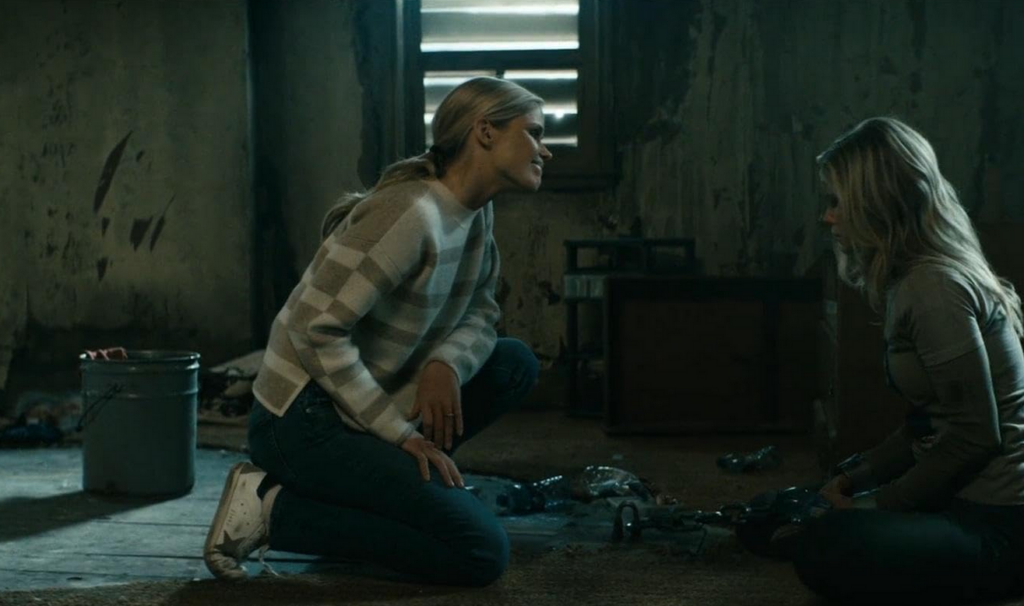
While that was devastating for the character, it was a little cathartic for those of us who felt like Annie was a little too good of a good guy.
What didn’t work
This is a small matter, but it is an issue that I want to address. After Annie finds out that Hughie slept with her doppelganger, she is furious at him.
In addition to this being unfair, it’s also a very cliche element to add. In almost every instance of a lookalike in fiction, there’s a moment where the love interest of the victim is fooled. Or almost fooled. And it’s always the same fight. It’s just played out and predictable. I’m just glad that it didn’t last very long.
Now that we’ve come to the end of the season, I can officially say that it was amazing. The story was deep and rich. The special effects were a stomach-turning good time. The character development was spot-on and satisfying. And, of course, it left me just about gagging to see what happens next. Unfortunately, it looks like we’ll have a bit of a wait. Because as of right now, the fifth season isn’t expected until 2026.

We’ve reached the second to last episode of The Boys, season four. And, as is appropriate for the penultimate episode of any show, things have to get a lot worse before they can get better.
Let’s discuss.
The story
Christmas is coming, and the whole world is getting ready. Ryan, despite being very clear that he didn’t want to appear on any TV shows or movies, has been strong-armed into participating in a Vought puppet Christmas special. He draws the line, though, when asked to sing about turning one’s parents in if they start talking about woke things.
Meanwhile, The Boys are trying to keep each other together. Butcher decides to take Sameer to the rest of the team. He also gets Frenchie out of prison, hoping they can make the Sup virus necessary to finally take down Homelander. Instead, this decision means disaster for one member of the team.
What worked
I first want to talk about Ryan’s speech near the end of the episode. Because it was exactly the moral of this whole story.
Ryan’s dad is a monster. His stepdad is also kind of a monster. But Ryan is a good kid. He cares about people, about family. And while he loves Homelander and Butcher, he doesn’t want to be like them.
Even better, this speech sounded like something a kid would say. Ryan didn’t open his mouth and start sounding like a college student all of a sudden. He sounds like a kid who misses his mom and wants to live up to the good standards she set for him. And I think that’s terrific.
Speaking of Homelander, he shot himself in the foot in this episode. I said earlier in the season that his hubris was going to be his downfall, and I was right. Without Sage, he just has the same weaknesses he’s always had. He’s going to fail because he just isn’t clever enough or patient enough to succeed.
Without Sage, I think a win is in the bag for The Boys. This isn’t to say that Homelander by himself isn’t dangerous. It’s just that he’s more like a wildfire than a controlled burn. He’s going to cause a lot of damage, but not get anything he wants out of it.
More’s the pity for him and everyone else who has to share his world.
Finally, I am thrilled with A-Train’s redemption story. I love that he wants to be a good person not to save himself, but to be a good person. His honest, pure and warm reaction to that little kid smiling at him in the last episode was heartwarming. It changed him in a moment, bringing to light a goodness that he’s been keeping under wraps for a long time.
This, along with Ryan’s courageous speech, proves once again what The Boys does so well. Yes, it’s gruesome. Yes, there’s blood and balls and batshit events. Yes, someone occasionally gets ripped in half. But there is a true human goodness in the story. One that we catch glimpses of. There are good people among the monsters. There is hope for redemption.
What didn’t work
Of course, so few things in this life are perfect, and this episode was no exception. For instance, I was irritated by the insinuation that Butcher cheated on his wife.
That just doesn’t make any sense. We’ve seen flashbacks of Billy and Becca. They were happy. He was happy. He was head over heels for her. And I don’t think it’s realistic or necessary for the character to throw in that he cheated. It does nothing to add to the story, it’s just a weird and offputting moment.
Doesn’t Butcher have enough to hate about himself? Can’t we just give him that at least he was a good husband?
Finally, I kind of hate that we ended up with Annie being caught. It’s just cliche, which is something I don’t normally say about this show. It feels lazy unless they do something very clever with it in the last episode. Which, I suppose, they might.
Next up is the season finale. And with this season being as insane as it has been, I’m expecting nothing short of bloody fireworks. And I mean literal fireworks of blood. At this point, would it surprise anyone?
 (4 / 5)
(4 / 5)
Episode six of The Boys was one of the most surprising episodes of the series so far. And that is certainly saying something. Because this season has so far been bonkers.
The story
Our episode today revolves around a party at Tek Knight’s lovely mansion. Yes, it does look just like Wayne Manor.
The Boys know that Tek Knight is working with Homelander on something, but they don’t know the details. So they decide to send Hughie in to bug the mansion.
Because that’s worked so well the other two times he’s tried to hide a bug!
It should surprise no one that this time goes no better. Hughie finds himself in Tek Knight’s basement. And by that I mean his BDSM dungeon.
Meanwhile, the party upstairs is no less disturbing. Homelander and Sage are trying to convince some well-off political donors to support a cue after the election. When pressed for details on his plan, Homelander freezes. He looks to Sage for help, but she wasn’t recently shot in the head and still in the junk food stage of her healing.
Fortunately, or unfortunately depending on your point of view, Neuman jumps in and saves the day.
What works
If I’m going to say one thing about this episode, it didn’t hold back at all. I didn’t expect them to show a character masturbating, sitting their bare behind on a cake, or spraying breastmilk into someone’s face. But every time I thought they’d cut the scene and let something be left to our imagination, they did not do that.
This is a dangerous move. Whenever you show the monster, you run the risk of them not being scary enough, or gross enough. As Stephen King says in Danse Macabre, to leave this sort of thing to the imagination if the reader makes things so much worse. So when they finally experience the monster, they might say that this isn’t so bad. It could have been so much worse.
But in this case, they managed to avoid that by making the scenes, especially the ones in Tek Knight’s dungeon, so much worse than I imagined it would be.
What doesn’t work
While this was a deeply disturbing episode in many ways, there was one really innocent and sweet moment.
And yes, I did have a problem with it.
Confronted by Firecracker, Annie decides to apologize for spreading rumors about her when they were kids. She tells her that she is genuinely sorry.
And I believe her. I don’t think Firecracker did, but I did.
So why is this an issue? Because I’m starting to think that Annie is maybe too nice. She is too good.
I know that Annie is our good guy. But every one of the other good guys has flaws. Hughie let his pride get in the way and took Temp V. MM hid himself from his daughter instead of teaching her to work through her emotions. Kimiko is far too closed off and has a hard time trusting others. Frenchie numbs himself with drugs. And well, what hasn’t Butcher done?
It is unrealistic that Annie is just so kind and so flawless. We all have shadows in our personalities. We all have weaknesses, we all mess up. We all do things we wish we could take back. The fact that Annie doesn’t seem to have anything like that is not just unrealistic. It’s infantilizing.
Give her some deep dark secrets. Give her something real to regret.
This was a shocking episode, even for someone fairly jaded like me. I wasn’t expecting the sort of weird sexual depravity, though I guess maybe I should have seen it coming. It was dark, upsetting, tense, and funny as hell. And with just two episodes left in the season, I can imagine the stakes are only going to get higher.
 (4 / 5)
(4 / 5)
By the way, if you like my writing you can get my short story, Man In The Woods, on Smashwords and Amazon.



